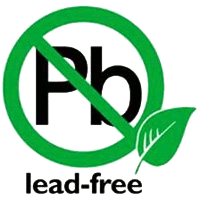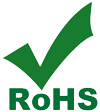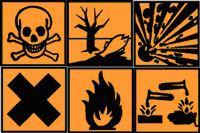ACTIA Environment Friendly Greener Focus
Innovations and Solutions
For ACTIA, the environment is more than a concept, it’s the very heart of the equipment we develop and manufacture.
Factory-fitted equipment for electronic diagnostics and anti-pollution testing equipment, ecodriving solutions to reduce fuel consumption and exhaust emission… our innovation efforts provide solutions that meet the environmental concerns of the automotive industry.
 Processes and Organization
Processes and Organization
The ACTIA Group’s environmental policy is based on principles that guide all the company’s processes:
- Continuing our actions contributing to the development of standards and regulations in the transport field.
- Compliance with current regulations and standards on the environment.
- Continuously improving our Environmental Management System (EMS) which meets the requirements of standard ISO14001 and contributes to reducing environmental intrusion and impacts.
- Prevention by an appropriate hazard analysis process.
- Specifying and regularly monitoring environmental targets. We pay particular attention to industrial waste management aspects, and to generally reducing our environmental impact.
- Maintaining a dedicated organization to sustain the policy.
- Promoting the policy to all players in our processes (customers, staff and suppliers) through awareness and training campaigns, and listening to all those concerned by the Company’s environmental performance.
- Ensuring an orderly working environment and staff awareness.
- Preventing pollution and hazards concerns us all. Saving raw materials, managing energy, adding value to waste and reducing effluent require constant vigilance and perseverance.
Industry
Aware that our business also has an impact on the environment, as part of its sustainable development, ACTIA aims to be acknowledged as an industrial partner contributing to protecting the environment. The ACTIA Group is committed to major environment protection programs in the industrial sphere.
Rolling out Lead Free technology
 ACTIA’s active participation in the European GEAMCOS (Green Electronics in Aeronautical and Military Communication Systems) project, has enabled the Group to acquire considerable knowledge in the « Lead Free » technology field and to use this technology in several areas:
ACTIA’s active participation in the European GEAMCOS (Green Electronics in Aeronautical and Military Communication Systems) project, has enabled the Group to acquire considerable knowledge in the « Lead Free » technology field and to use this technology in several areas:
Choosing and managing components
ACTIA now incorporates « Lead Free » constraints in the procurement specifications for electronic and mechanical components and has also implemented its own strategy for classifying consumables as « Lead Free » (soldering alloy and flux).
Specialist plants and production
The Toulouse industrial site in France, which concentrates on short runs, is equipped with a brazing line that can change between “Lead and Lead Free” brazing technology in a few minutes. The site also has the benefit of experience in reflow and automatic « Lead Free » soldering since 1997.
The plant in Tunisia has produced long runs of boards using « Lead Free » assembly since early 2006. To date, several hundred thousand boards have thus been assembled with a very high standard of quality and reliability.
The ACTIA Group is continuing to invest, especially in its Specialist Process Laboratory which is actively cooperating on a new project in the Lead Free technology field with major partners in the Aeronautics and Railway sectors
RoHS and WEEE programs
 RoHS (Restriction of Hazardous Substances)
RoHS (Restriction of Hazardous Substances)
This European directive seeks to restrict the number of hazardous substances used in EEE (Electrical and Electronic Equipment), specifically lead, mercury, cadmium, hexavalent chromium and certain brominated flame retardants used in some plastics (PBB and PBDE).
WEEE (Waste Electrical and Electronic Equipment)
This directive makes manufacturers of such equipment responsible for recovering and recycling their products at end-of-life, from end-users.
 DEEESince 2005, ACTIA has introduced procedures and methods in order to comply with the European RoHS and WEEE directives by instituting in particular tough regulatory monitoring as part of its ISO14001 environmental certification. The aim of this process is to anticipate as much as possible the impact on the Group’s products and production facilities.
DEEESince 2005, ACTIA has introduced procedures and methods in order to comply with the European RoHS and WEEE directives by instituting in particular tough regulatory monitoring as part of its ISO14001 environmental certification. The aim of this process is to anticipate as much as possible the impact on the Group’s products and production facilities.
The RoHS constraints are noted in our ERP system and in procurement specifications for electronic and mechanical components. To confirm compatibility with the various manufacturing processes, we have implemented our own strategy for classifying RoHS compliant components. Products that are subject to the WEEE directive are identified by the required label and a special procedure enables EEE to be recovered at the end of its life. Waste management is regularly identified as a strong-point of our Environmental Management System at customer audits or certification.
REACH program
 The European REACH (Registration, Evaluation and Authorization of Chemicals) regulation was approved in December 2006 and came into force on 1 June 2007. The aim of REACH is to put onto manufacturers and importers of chemical products responsibility for assessing and managing risks posed by some 30,000 substances.
The European REACH (Registration, Evaluation and Authorization of Chemicals) regulation was approved in December 2006 and came into force on 1 June 2007. The aim of REACH is to put onto manufacturers and importers of chemical products responsibility for assessing and managing risks posed by some 30,000 substances.
The REACH program is completely universal; so a person in the ACTIA Environment Unit is dedicated to coordinating and supporting the Group’s different departments. Because of its industrial activities, ACTIA is classified as an upstream user. An inventory of substances bought has thus been compiled and each of those substances is identified and listed according to its impact as regards the REACH program.
